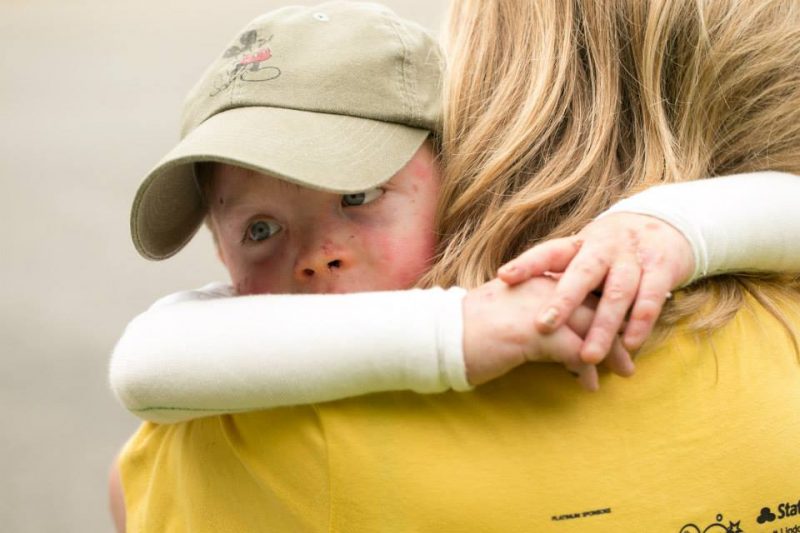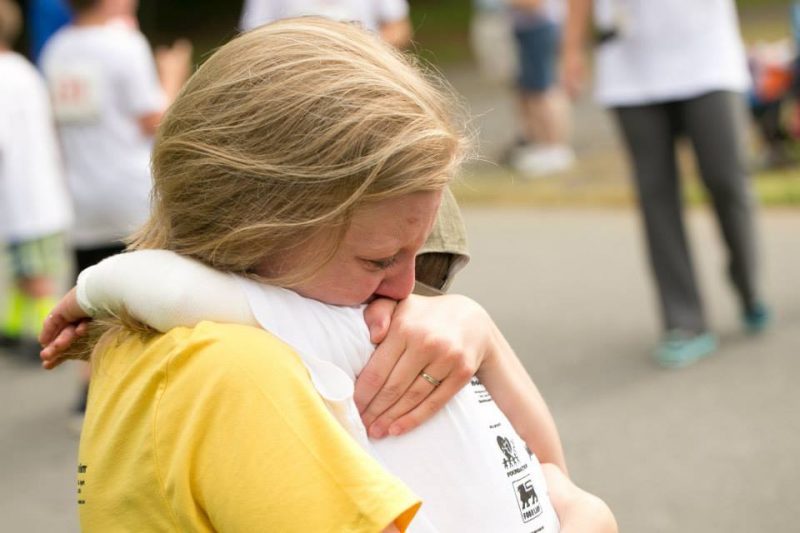Slowing Down to Sit in the Suffering
Written by |

After more than 12 years of watching my son, Jonah, battle epidermolysis bullosa, and battling it myself as a caregiver, I have found myself becoming robotic, overly acclimated to our normal. I’m no mental health expert, but I imagine this has something to do with my survival brain kicking in, some weird rewiring of my brain and body, forcing it to do what it has to do — and think how it has to think — to survive.
And we do survive. But I find myself becoming somewhat calloused to Jonah’s pain and automatic in my response to his suffering.
I’m not proud of it. It hurts him. When it comes to wound care, bandage changes, tube feeding, and our have-to-get-it-done schedule, I’m somewhat hard, mechanical. Pushing him to do what has to be done. Pushing myself to block it out and move on. Forcing my gotta-keep-moving perspective, my forward motion, on him.
Because what will happen if we stop? What will happen if we really have to face it?

Jonah hugs his mom, Patrice Williams, in this photo from 2014. (Courtesy of Jenn Lewis Photography)
If I just keep moving, maybe I won’t notice. Maybe I won’t have to acknowledge that my son is in constant pain with a lifelong, debilitating disease. Maybe I won’t have to own and confront that there is absolutely nothing I can do to take it away from him. Maybe he won’t have to see me crumble. Maybe I won’t break. If I can just be strong enough for the both of us.
If I just keep moving, maybe I won’t have to drown in this helpless feeling, watching my son suffer, completely powerless to make it better.
Our brains help us survive. But if we go too long in automatic mode, we become too hard. We survive too well. We start to harm the children we fight every day to protect.
I can be too strong. Too fierce. Too feisty. Too capable in my care for him. I can achieve too much.
Sometimes he needs me to stop. To break. To crumble. Because when I do this, he can see that it hurts me too. He sees that I suffer too, that I see him suffering. I can lie beside him in bed and cry. Cry with him. Cry for him. Cry for me. I can acknowledge that life isn’t fair. I can help him name his pain, his loss, his differentness. I can stop and hold him for a while, so he has a place to lay it down. I can show him that he doesn’t always have to be strong, to bear it well.
Sometimes he just needs me to sit in the suffering with him. So we can have the hard conversations. No, it isn’t fair. No, nobody can really understand. Yes, it’s OK to be angry. Yes, it’s understandable that you are sad. Yes, it’s more than most kids have to deal with. It’s more than any kid should ever be asked to deal with. Yes, it’s OK to want to be normal. Yes, you likely never will be.
I’m thankful for the moments that force and remind me to do this. This week we had a hard conversation about nursing care at school. A trigger. A hard incident. A prompted conversation. But when it was done, he cried, I cried, and we had had a much-needed conversation. Though difficult, it allowed him to express what he needed to express. And it allowed my heart to break, to open those cracks back up, so I could become malleable again. Those breaks in me let his suffering seep in, and allow my compassion to trickle out.

Patrice Williams and her son, Jonah, embrace in this photo from 2014. (Courtesy of Jenn Lewis Photography)
And even though it could be perceived by the world (and let’s be honest, by the overachieving me) as weakness, it is often the best thing for my brave boy to see that I hurt too. To watch me break. To know that we can both get through it. To understand that surviving sometimes means sitting in the pain.
To remember that we are in it together. Always.
***
Note: Epidermolysis Bullosa News is strictly a news and information website about the disease. It does not provide medical advice, diagnosis, or treatment. This content is not intended to be a substitute for professional medical advice, diagnosis, or treatment. Always seek the advice of your physician or other qualified health provider with any questions you may have regarding a medical condition. Never disregard professional medical advice or delay in seeking it because of something you have read on this website. The opinions expressed in this column are not those of Epidermolysis Bullosa News or its parent company, Bionews, and are intended to spark discussion about issues pertaining to epidermolysis bullosa.







Leave a comment
Fill in the required fields to post. Your email address will not be published.